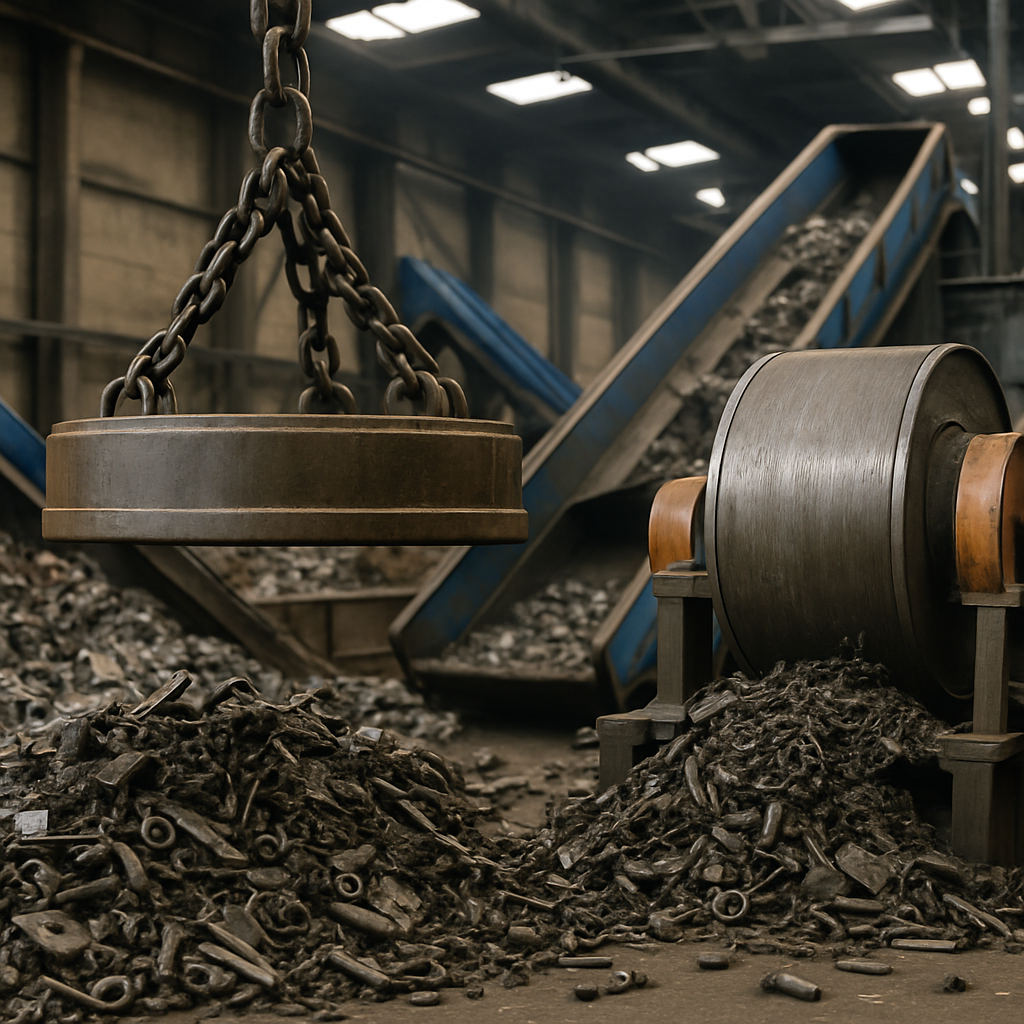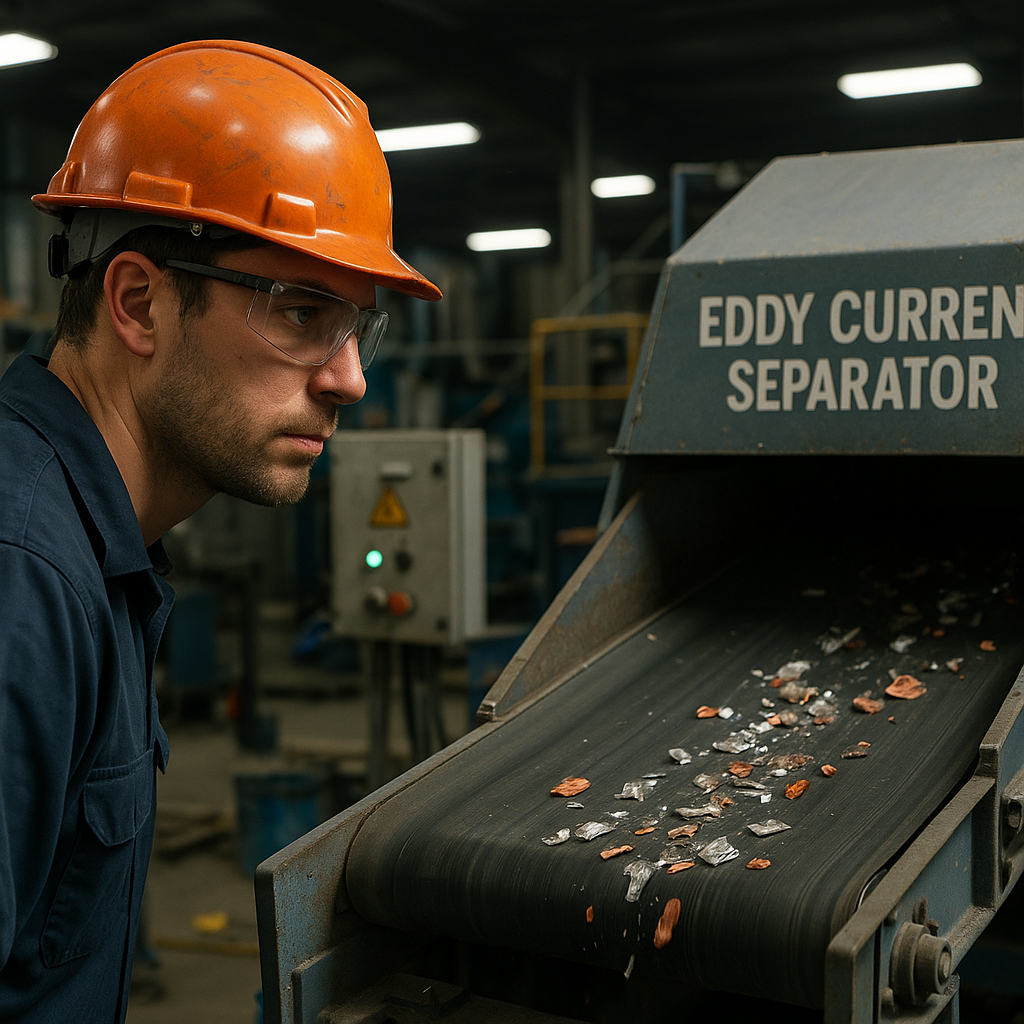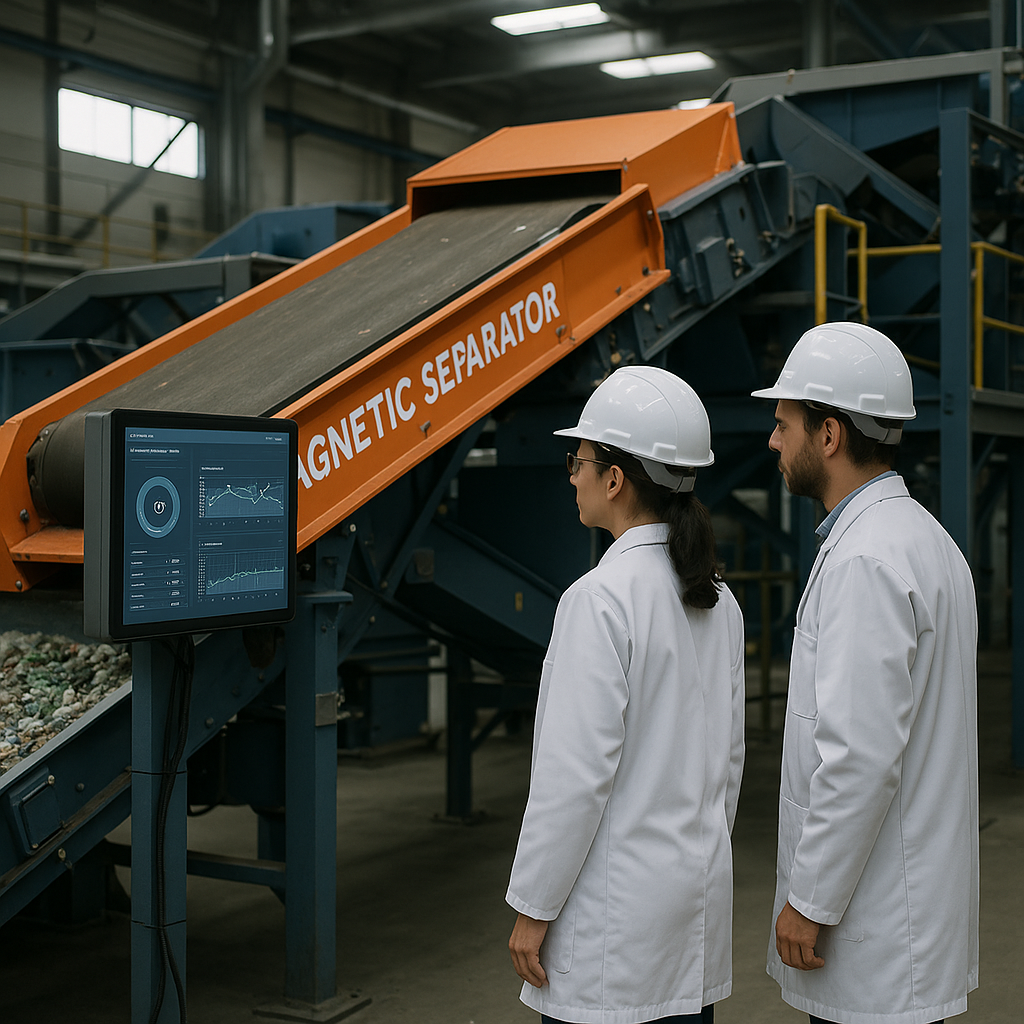5901 Botham Jean Blvd, Dallas, TX 75215
Magnetic Separation in Scrap Metal Recycling: What You Should Know
July 25, 2025Magnetic separation stands as one of the fundamental processes in modern scrap metal recycling. This technique uses the natural magnetic properties of certain metals to efficiently sort and separate materials in recycling facilities. The process works by attracting ferrous metals—those containing iron, such as steel—away from non-ferrous metals like aluminum, copper, and brass.
At its core, magnetic separation relies on powerful magnets or electromagnets that create magnetic fields strong enough to pull iron-containing materials from mixed waste streams. When a diverse mix of scrap metal passes through or near these magnetic fields, the ferrous components are drawn to the magnets while non-magnetic materials continue along their original path. This simple yet effective principle enables recycling facilities to process tons of mixed metal waste daily with remarkable efficiency.
The importance of magnetic separation in today’s recycling industry cannot be overstated. As global demand for recycled metals continues to rise, the ability to quickly and accurately sort different metal types has become essential for efficient resource recovery. Magnetic separation represents the first critical step in transforming jumbled scrap into valuable, reusable metal resources that reduce the need for energy-intensive mining of virgin materials.
What Types of Magnets Are Used in Metal Recycling?

Magnetic separation in recycling facilities relies on several different types of magnets, each suited to specific applications based on their strength, durability, and operating conditions. The most common magnets used in recycling are permanent magnets and electromagnets.
Permanent magnets—such as ceramic, alnico, or rare-earth magnets—retain their magnetic field without the need for electricity, making them energy-efficient choices for applications where a constant magnetic field is sufficient. Rare-earth magnets, especially neodymium magnets, are the strongest type and are frequently used in applications requiring high-intensity fields, such as separating fine ferrous particles from shredded waste.
Electromagnets, on the other hand, are powered by electricity and can be switched on or off as needed. This makes them ideal for applications requiring controlled magnetism or varying intensity based on operational needs. These magnets consist of wire coils wrapped around a core material; when electric current passes through the coils, a magnetic field is generated. Electromagnets are especially useful in heavy-duty applications like lifting large scrap metal pieces or operating magnetic drums in high-volume conveyor systems.
Choosing the right type of magnet depends on factors like the size of the recycling operation, the type of metals being processed, and the desired level of sorting precision. In many facilities, a combination of magnet types is deployed to handle different stages of material separation, optimizing both efficiency and recovery rates.
How Do Eddy Current Separators Enhance Non-Ferrous Metal Recovery?

Eddy current separators are remarkable machines that revolutionize the recycling industry by efficiently recovering valuable non-ferrous metals like aluminum and copper from mixed waste. These devices use clever physics rather than brute force to separate materials that traditional magnets simply can’t touch.
At their core, eddy current separators operate on two fundamental principles of electromagnetism. When conductive non-ferrous metals pass through a rapidly changing magnetic field, electric currents form inside the metal in circular patterns – much like the swirling eddies that form when you disturb still water with a paddle. These circular currents, called eddy currents, create their own magnetic field that opposes the original field that created them.
The physical setup of an eddy current separator includes a conveyor belt carrying mixed materials over a special magnetic rotor. This rotor contains alternating magnetic poles (north/south) spinning at high speeds – typically between 2,000 and 5,000 RPM – inside a non-metallic drum. As non-ferrous metals travel over this drum, the rapidly changing magnetic field induces those eddy currents, generating a repulsive force that literally pushes aluminum cans, copper wires, and other non-ferrous metals off the conveyor into a separate collection bin.
Think of it like trying to push two magnets together with their same poles facing each other – they naturally repel. In this case, the non-ferrous metal momentarily becomes a magnet itself (thanks to the eddy currents) and gets repelled from the separator’s magnetic field. Meanwhile, non-metallic materials like plastic and glass aren’t affected by these magnetic forces and simply fall off the end of the conveyor.
Applications Across Recycling Industries
Eddy current separators serve as workhorses in multiple recycling operations. In automotive recycling, they extract valuable aluminum and copper from shredded vehicle waste. In municipal recycling facilities, they efficiently separate aluminum cans from other recyclables. The technology is equally valuable in electronics recycling, where recovering precious metals from e-waste is both environmentally crucial and economically rewarding.
Key Factors Affecting Separation Efficiency
Several variables determine how effectively an eddy current separator performs. The rotor speed creates different magnetic field strengths, while conveyor belt speed affects how long materials are exposed to the magnetic field. The size and conductivity of the metal particles also matter – larger, more conductive pieces like aluminum cans are easier to separate than smaller metal fragments.
Advanced Design Features
Modern eddy current separators come in two main designs. Concentric rotors have magnets arranged evenly around a drum, creating a uniform magnetic field ideal for larger materials. Eccentric rotors position a smaller magnetic assembly off-center, creating a focused magnetic “hot zone” that works better for fine materials like shredded electronic components.
Before material reaches the eddy current separator, upstream magnetic separation is essential to remove ferrous metals (iron and steel). This prevents damage to the equipment and ensures optimal non-ferrous metal recovery. Most recycling systems use a series of magnetic separators working together – each designed to target specific types of metal in sequence.
The advancement of eddy current technology has transformed metal recycling economics. Facilities can now recover up to 90-95% of aluminum from waste streams, providing significant environmental benefits. Recycling aluminum uses only 5% of the energy required to produce new aluminum from raw materials, making these separators vital tools in our push toward a more circular economy.
Why Pre-Sorting with Magnetic Separation Improves Recycling Efficiency
Integrating magnetic separation early in the recycling process streamlines operations and improves overall material recovery. Pre-sorting ferrous metals before other sorting technologies are applied prevents contamination of downstream equipment and ensures smoother processing. For instance, eddy current separators and optical sorters are sensitive to interference from steel and iron pieces; removing these materials beforehand helps maintain equipment longevity and accuracy.
In addition, pre-sorting reduces the volume of material that requires complex or expensive sorting steps. By eliminating ferrous components early, facilities can focus resources on isolating high-value non-ferrous metals, plastics, and other recyclables. This results in a more cost-effective and energy-efficient process.
Furthermore, early magnetic separation can enhance workplace safety. Large ferrous objects pose a risk of damage or injury when mixed with other recyclables. By isolating these materials early, facilities minimize the risk of equipment jams, mechanical wear, or worker hazards.
Ultimately, pre-sorting with magnetic separation is a strategic move that supports both economic and operational goals. It allows for cleaner input streams, higher recovery rates, and better-quality end products—all essential components of a successful recycling program.
Conclusion: The Future of Magnetic Separation in Metal Recycling

Magnetic separation stands as a cornerstone technology in modern scrap metal recycling. This method has proven indispensable for efficiently sorting ferrous materials from complex waste streams while minimizing environmental impact. The simplicity and effectiveness of magnetic separation make it an essential component in recycling facilities worldwide.
Looking ahead, magnetic separation technology is poised for significant advancement. As global demand for recycled metals continues to grow and environmental regulations become more stringent, the role of magnetic separation will only become more crucial. Future innovations will likely focus on enhancing precision through AI-powered systems that can detect and sort materials with unprecedented accuracy. Integration with sensor-based technologies will allow for better identification of complex alloys and contaminants. Additionally, energy-efficient designs will reduce operational costs while improving throughput capacity for recycling facilities.
For your metal recycling needs, contact Okon Recycling at 214-717-4083. Our team employs advanced magnetic separation technology to ensure maximum recovery and purity of your recycled materials.
